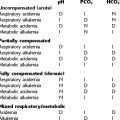CHAPTER 17 EQUIPMENT DECONTAMINATION AND INFECTION CONTROL
PRETEST QUESTIONS
1. Which of the following procedures is most often used to decontaminate a bacterial filter used on a mechanical ventilator?
2. Diseases that may be transmitted via airborne particles include which of the following?
3. Which of the following procedures are capable of sterilizing equipment?
4. Which of the following should be worn as a precautionary measure when changing a patient’s ventilator circuit?
5. A high-efficiency particulate air (HEPA) filter should be used in the room of a patient with which type of condition?
6. Biologic indicators are used in decontamination procedures for which of the following reasons?
REVIEW
II. CONDITIONS THAT INFLUENCE ANTIMICROBIAL ACTION
IV. STERILIZATION AND DISINFECTION TECHNIQUES
V. IMPORTANT POINTS CONCERNING DECONTAMINATION OF EQUIPMENT
VI. INFECTION CONTROL AND STANDARD (UNIVERSAL) PRECAUTIONS
CRT Exam Content Matrix: IIB4, IIB5
RRT Exam Content Matrix: IIB3, IIB4
POSTCHAPTER STUDY QUESTIONS
1. List four diseases that are spread by airborne pathogens.
2. What device should be used in the ventilation system through which air is discharged safely from the room of a patient with a disease caused by an airborne pathogen?
3. List three methods that may be used to sterilize respiratory therapy equipment.
4. List three diseases transmitted by the spread of droplets.
5. What is a nosocomial infection?
6. List four gram-negative organisms that may result in necrotizing pneumonia.
7. What methods are used to determine the effectiveness of the decontamination process?
Hess D, Respiratory care principles and practice, and others, Philadelphia, Saunders, 2002.
Wilkins RL, Stoller JK, Kacmarek R. Egan’s fundamentals of respiratory care, ed 9. St Louis: Mosby; 2009.
White G. Basic clinical lab competencies for respiratory care: an integrated approach, ed 4. Clifton Park, NY: Delmar; 2003.



